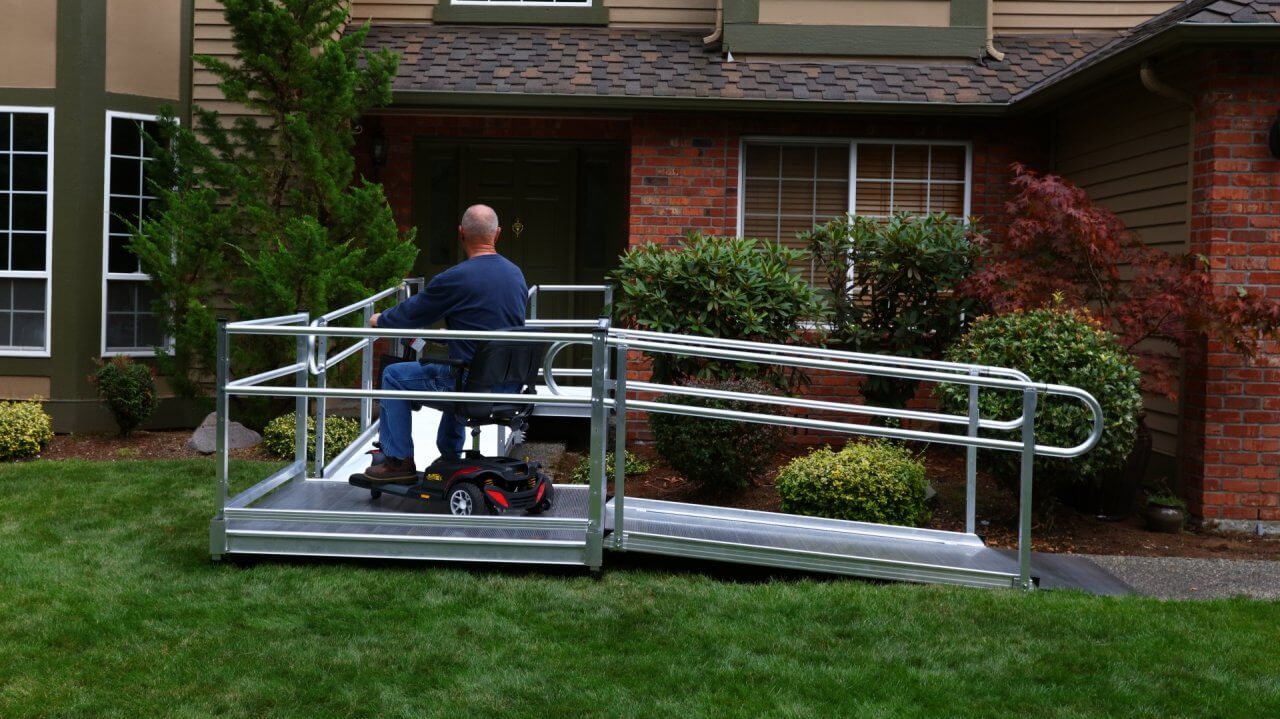For years, home modular ramps were constructed of wood. They helped people access their homes and allowed for custom carpentry to match the surrounding landscape. However, when aluminum ramps came on the market, the cracks in wooden ramps were exposed!
- Contractors—Wooden ramps require that you hire a contractor, contact your utility provider and get permits.
- Upkeep—Wooden ramps are a lot like wooden decks—they need regular maintenance and upkeep in order to maintain their appearance and not deteriorate. If you’re not in the position to do this sort of maintenance on your home anymore, you will need to hire someone to take care of it.
- Time—Wooden ramps take longer to install. The construction process typically lasts two to three days, depending on the size and layout.
- Cost—You’ll need to purchase quality lumber in order to prevent the wood from warping, in addition to any staining or waterproofing materials.
- Maneuverability—Once built, a wooden ramp is not easy to remove, expand or reconfigure.
Aluminum ramps can address many of the issues you may experience with wooden ramps. For example:
- Aluminum ramps are easy to install and don’t require permits.
- They’re low maintenance, simply needing the occasional spray washing for cleanliness.
- They can be installed in less than a day.
- They are traditionally a more affordable option and are better for the environment.
- They can be quickly and easily reconfigured.

